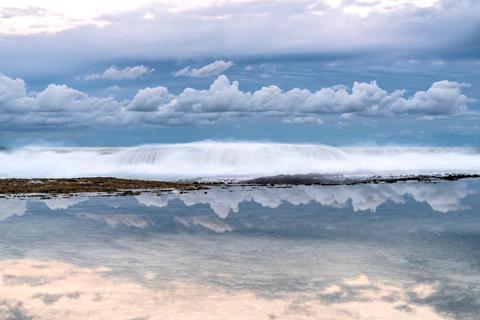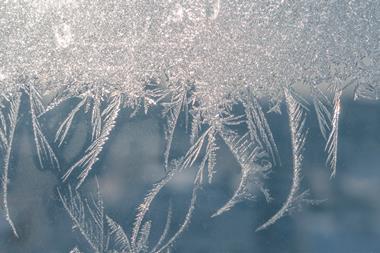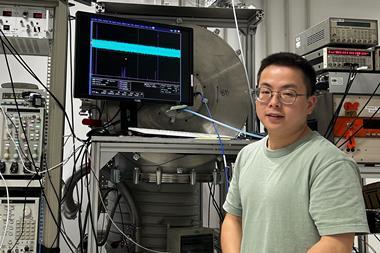Despite its familiarity, water is a chemical oddity. But that’s what makes it fascinating
A chemistry education gradually impresses on you what an odd substance water really is. To start with, there is no other compound with a molecular weight as low as 18 and a boiling point so high as 100°C – no such substance other than water can even exist, as you quickly realise when you look at the elements there are to work with.

We have worked out innumerable uses (and occasional abuses) of water’s unique properties, but it’s an irony of the universe that one of the most familiar substances in our world is simultaneously such a bizarre chemical outlier. Science shows us that our normal experience is only a tiny slice of reality: we’ve lived our entire lives at the bottom of a gravity well, to the point that it defines our notions of direction – ‘up’ and ‘down’ have no meaning in most of the universe. But thinking of water as the usual sort of liquid is one of our bigger misconceptions.
That’s surely why we are still working out its mysteries after all this time. As a medicinal chemist, water molecules are absolutely central to my job: drug molecules have to move from being in solution (and thus surrounded by a retinue of individual solvating waters) to being localised in a particular binding site, generally in some protein target. These sites almost always have water molecules inhabiting them already, and the thermodynamic interplay between shedding those solvating waters and displacing the already-bound ones is one of the most crucial parts of getting a potent drug candidate in the first place.
It’s an array of bewilderingly complex tradeoffs between hydrogen bonds, the entropy of freely moving and bound water molecules, and subtle stabilising and destabilising interactions. I have seen highly experienced computational chemists arguing among themselves about the movement of a single water molecule in a protein’s active site, and about how to even begin to estimate the actual energy balances involved.
Could we actually do synthetic chemistry in minute water droplets? Would that ever be practical?
Beyond my own field, such an apparently simple thing as a water droplet turns out to hold enough complexities to make (or perhaps ruin?) entire scientific careers. Imagine zooming in on a speck of water floating in the air – say, a droplet in a cloud. It’s a tangle of constantly shifting water molecules hydrogen-bonding with each other in a complex dance, but what happens as you get out to the edge, to the surface of the droplet?
Things change there – they have to, because the individual waters are so strongly attracted to each other and are not going to point empty unbound parts of their structure out into the air if they can possibly point inwards towards other water molecules. The whole distribution of electronic charge starts to change on the surface thanks to such realignments, and there’s currently a very lively dispute in the chemistry literature about just what the electric fields on a water surface must be like. You’d think that these have to affect the chemistry of other dissolved substances, but proving this takes some careful experimentation.
As droplets get smaller and smaller, these effects become even more extreme, and several research groups have reported very unusual chemistry in such environments – bond-breaking and -forming reactions that seem bizarre under ordinary circumstances but are believed to be driven by these extreme electric field environments. Other researchers say that they cannot reproduce these results and doubt that the entire picture is accurate, and that has naturally led to further disputes about the experimental techniques involved and the instruments used to measure the minute amounts of new products formed. Could we actually do new synthetic chemistry in clouds of minute water droplets? Would that ever be practical, even if the phenomena involved are real to start with? No one knows – not yet.
What we do know is that such droplets (in clouds, fog, etc) can carry local concentrations of other small molecules on their surfaces, some of them pollutants. This alone is an important part of the chemistry of our atmosphere, whose details are still being worked out. Volcanic emissions, the salt spray over ocean waves, the slow evaporation of freshwater lakes – all of these have complex water-driven chemistry taking place around them. The next time you see the reflection of a white cloud in a puddle of water, one of the most familiar sights in all of human history, take a moment to realise just what a mystery you are really looking at, and how much about it we still have to understand.

















No comments yet